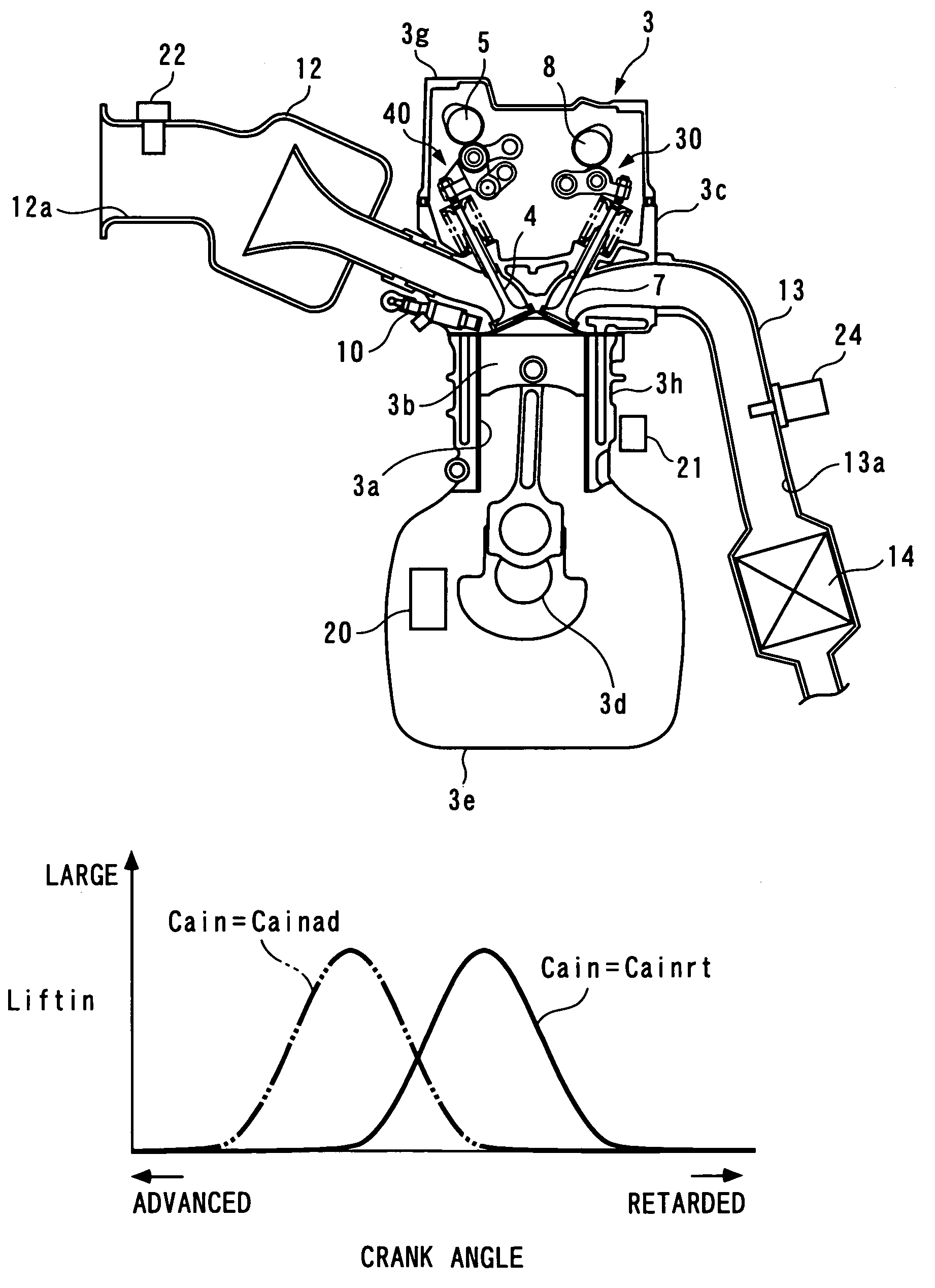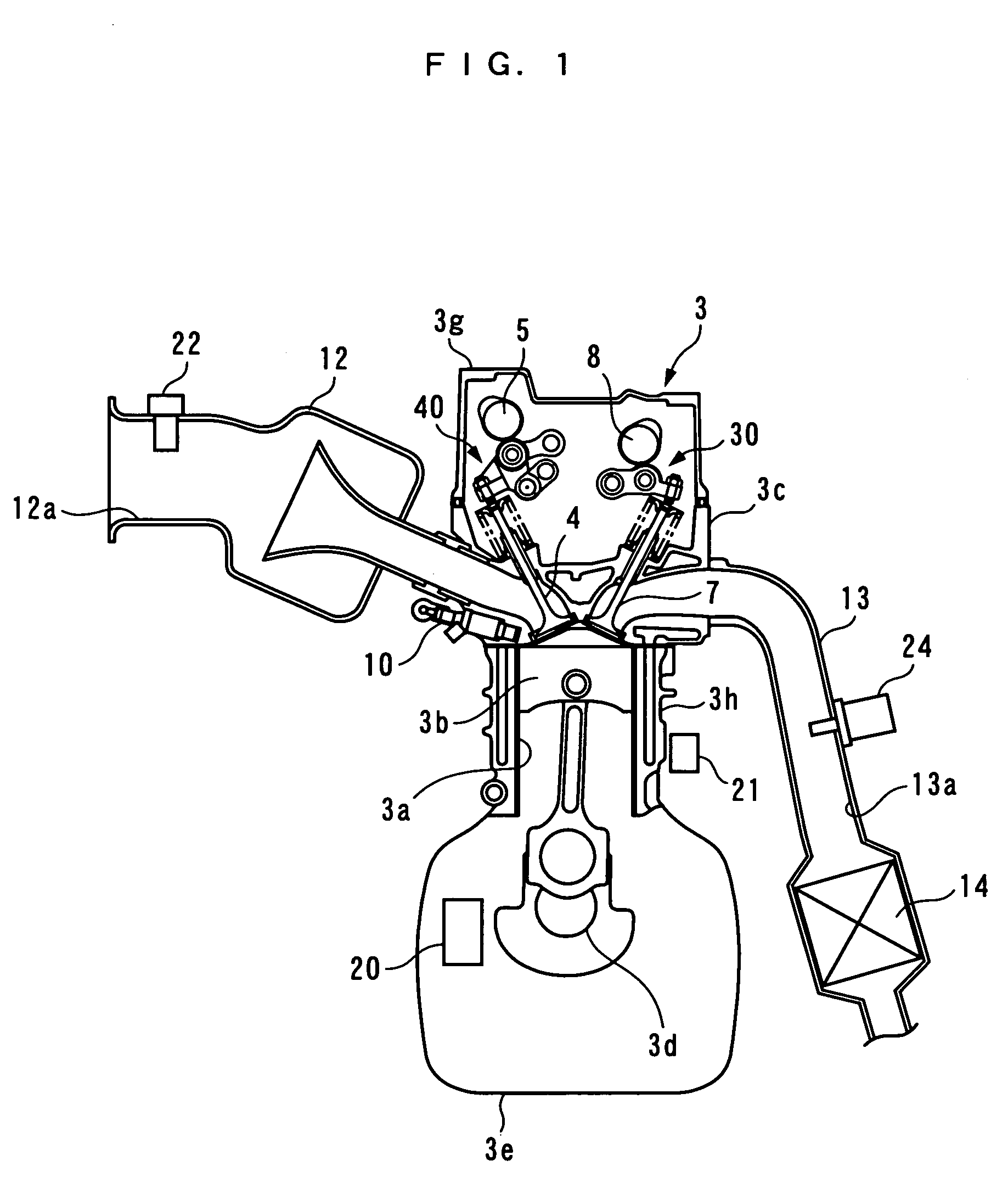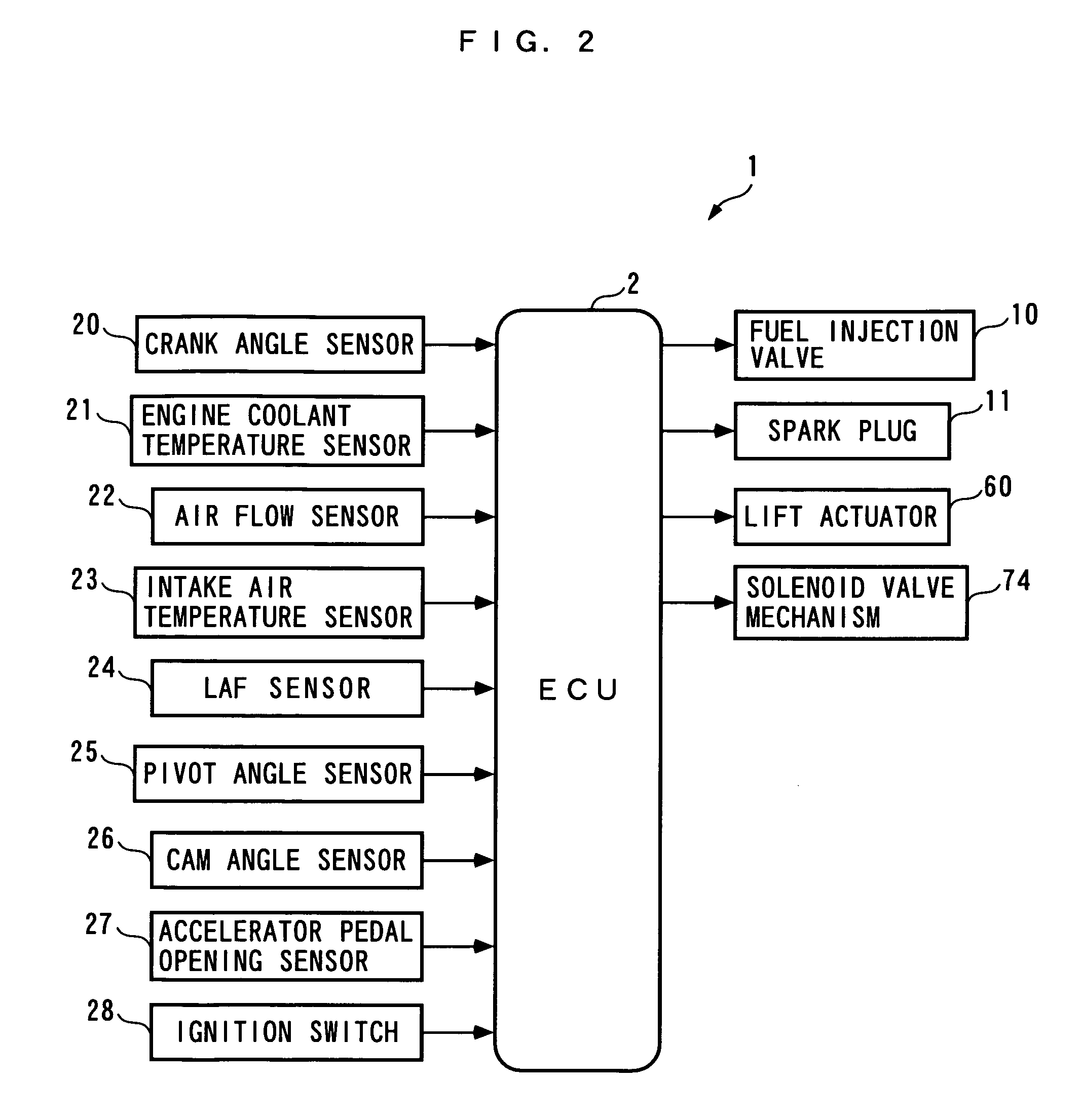Control apparatus
a control apparatus and control technology, applied in the direction of adaptive control, electric control, instruments, etc., can solve the problems of low control accuracy, low control resolution, and high friction of the above-mentioned hydraulically-driven variable cam phase mechanism as a controlled object, and achieve high levels of control resolution and control accuracy
- Summary
- Abstract
- Description
- Claims
- Application Information
AI Technical Summary
Benefits of technology
Problems solved by technology
Method used
Image
Examples
first embodiment
[0054]Hereafter, a control apparatus for an internal combustion engine, according the present invention, will be described with reference to the drawings. As shown in FIG. 2, the control apparatus 1 includes an ECU 2. As described hereinafter, the ECU 2 carries out various control processes for controlling a cam phase, a valve lift, etc., depending on operating conditions of an internal combustion engine (hereinafter simply referred to as “the engine”) 3.
[0055]Referring to FIGS. 1 and 3, the engine 3 is an in-line four-cylinder gasoline engine having a four pairs of cylinders 3a and pistons 3b (only one pair of which is shown), and installed on a vehicle, not shown. The engine 3 includes an intake valve 4 and an exhaust valve 7 provided for each cylinder 3a, for opening and closing an intake port and an exhaust port thereof, respectively, an intake camshaft 5 and intake cams 6 for actuating the intake valves 4, a variable intake valve-actuating mechanism 40 that actuates the intake ...
PUM
 Login to View More
Login to View More Abstract
Description
Claims
Application Information
 Login to View More
Login to View More - R&D
- Intellectual Property
- Life Sciences
- Materials
- Tech Scout
- Unparalleled Data Quality
- Higher Quality Content
- 60% Fewer Hallucinations
Browse by: Latest US Patents, China's latest patents, Technical Efficacy Thesaurus, Application Domain, Technology Topic, Popular Technical Reports.
© 2025 PatSnap. All rights reserved.Legal|Privacy policy|Modern Slavery Act Transparency Statement|Sitemap|About US| Contact US: help@patsnap.com



